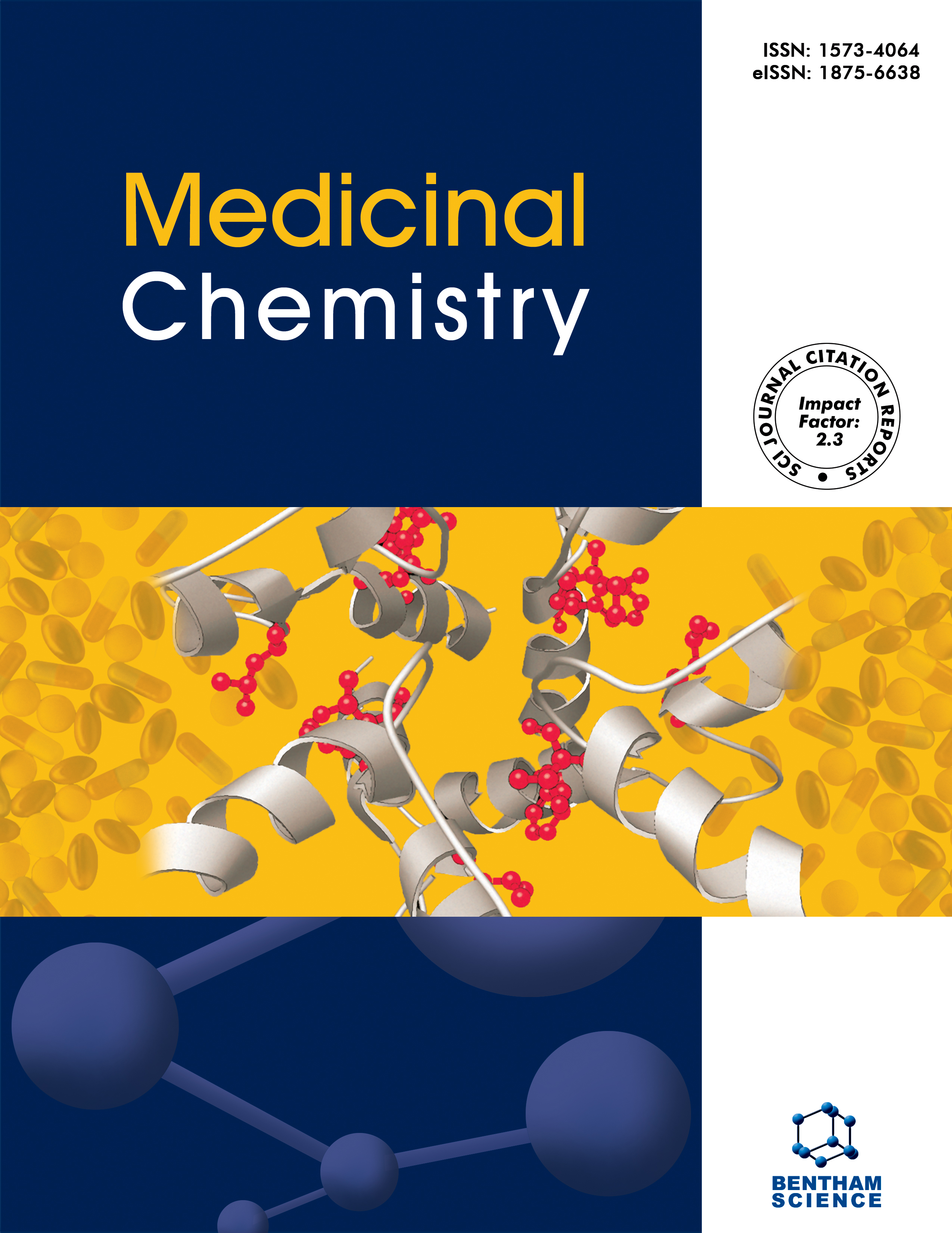- Home
- A-Z Publications
- Medicinal Chemistry
- Previous Issues
- Volume 19, Issue 4, 2023
Medicinal Chemistry - Volume 19, Issue 4, 2023
Volume 19, Issue 4, 2023
-
-
Recent Modifications of Anti-dementia Agents Focusing on Tacrine and/or Donepezil Analogs
More LessAuthors: Lamia W. Mohamed, Khaled O. Mohamed, Hadeer S. Sayed and Zeinab MahmoudAlzheimer’s Disease (AD) is a multifactorial incurable neurodegenerative disorder. It is characterized by a decline of cholinergic function in parallel with β-amyloid fibril deposition. Such an imbalance causes severe loss in memory and cognition, leading to behavioral disturbances, depression, and ultimately death. During the last decades, only a few approved drugs were launched onto the market with indications for treating ini Read More
-
-
-
Recent Insights on Synthetic Methods and Pharmacological Potential in Relation with Structure of Benzothiazoles
More LessBenzothiazole is a bicyclic heterocyclic compound that contains benzene fused with 1, 3- thiazole ring. Several researches established the potential of benzothiazoles as important moiety in various adverse pharmacological conditions. Benzothiazole and its derivatives have been in use and marketed as anti-microbial, anti-inflammatory, anti-diabetic, anti-oxidant, anti-convulsant, antitumor, etc. The variations in pharmacolog Read More
-
-
-
An Insight into COVID-19 and Traditional Herbs: Bangladesh Perspective
More LessAuthors: Md. M. Rahman, Sheikh Shohag, Md. Rezaul Islam, Shomaya Akhter, Sadia Afsana Mim, Rohit Sharma and Abdur RaufSARS-CoV-2 was first discovered in Wuhan in late 2019 and has since spread over the world, resulting in the present epidemic. Because targeted therapeutics are unavailable, scientists have the opportunity to discover new drugs or vaccines to counter COVID-19, and therefore a number of synthetic bioactive compounds are now being tested in clinical studies. Due to its broad therapeutic spectrum and low adverse effects, Read More
-
-
-
In vitro and In silico Xanthine Oxidase Inhibitory Activities of 3-Aryl-2- thioxo-2,3-dihydroquinazolin-4(1H)-one Derivatives
More LessAuthors: Afshan Gul, Syed M. Saad, Humaira Zafar, Atia-tul-Wahab, Khalid Mohammed Khan and M. Iqbal ChoudharyBackground: Hyperuricemia is associated with several disease conditions, such as atherosclerosis, arthritis, kidney stones, and many others. Xanthine oxidase (XO) is an enzyme that catalyzes the conversion of xanthine to uric acid. Hence, XO is a major therapeutic drug target in the treatment of hyperuricemia and associated disorders. Objectives: The current study aimed to identify XO inhibitors based on quinazoline Read More
-
-
-
Trifluoromethylated Aryl Sulfonamides as Novel CETP Inhibitors: Synthesis, Induced Fit Docking, Pharmacophore Mapping and Subsequent In vitro Validation
More LessAuthors: Reema A. Khalaf, Hamza Al Shaiah and Dima SabbahBackground: Cardiovascular disease is one of the leading causes of death. Atherosclerosis causes arterial constriction or obstruction, resulting in acute cardiovascular illness. Cholesteryl ester transfer protein (CETP) facilitates reverse cholesterol transport. It supports the transfer of cholesteryl ester from HDL to LDL and VLDL. Inhibition of CETP by drugs limits cardiovascular disease by decreasing LDL and increasing HDL. Object Read More
-
Volumes & issues
-
Volume 21 (2025)
-
Volume 20 (2024)
-
Volume 19 (2023)
-
Volume 18 (2022)
-
Volume 17 (2021)
-
Volume 16 (2020)
-
Volume 15 (2019)
-
Volume 14 (2018)
-
Volume 13 (2017)
-
Volume 12 (2016)
-
Volume 11 (2015)
-
Volume 10 (2014)
-
Volume 9 (2013)
-
Volume 8 (2012)
-
Volume 7 (2011)
-
Volume 6 (2010)
-
Volume 5 (2009)
-
Volume 4 (2008)
-
Volume 3 (2007)
-
Volume 2 (2006)
-
Volume 1 (2005)
Most Read This Month
Article
content/journals/mc
Journal
10
5
false
en


